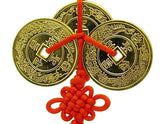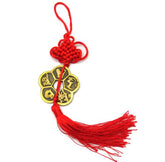Amulets

Amulets, Charms and Pendants
According to lst-century Roman author Pliny, an amulet is “an object that protects a person from trouble.”
In Mesopotamia, animal-shaped amulets were popular among the Sumerians and Babylonians, and were commonly used for fertility, strength, and protection. The oldest of these amulets dates back to about 2500 BC Cylinder seals fashioned from precious or semiprecious stones engraved with prayers and religious scenes were also used for various purposes. Other amulets used by the Sumerians and Babylonians, and in later times by the Assyrians, included figures of male and female deities, reptiles, and curious winged beings with human-like bodies and leonine heads.
In ancient Egypt, where majestic pyramids filled with secrets dominated the warm desert sands, numerous animal-headed gods and goddesses were worshipped. The sacred names of these deities, along with their divine images, were commonly inscribed upon amulets. Those that had received a magician's blessing were believed to be especially potent.
Ankh amulets of ancient Egypt were fashioned from such materials as wood, stone, various metals, and even wax. Consisting of a male symbol (the cross) surmounted by a female symbol (an oval), it clearly represented the sacred union of God and Goddess, whose marriage was said to take place at the source of the River Nile each year prior to the flood.
Other important amulets of the ancient Egyptians included the scarab (in the shape of a dung-eating beetle, which symbolized resurrection of the dead and eternal life, and was worn for protection against all forms of evil); the udjat (also known as the Eye of Horus, which was also worn for protection, repelling the evil eye, promoting good health, and general well-being); and the serpent's head (which protected the living from cobras and other poisonous snakes, and protected the dead from the serpent of the Underworld). The nefer, an amulet bearing a slight resemblance to a miniature lute, was greatly valued for its power to bestow upon its wearer physical strength, youth, good luck, and joy. Amulets in the shape of a frog were sacred to the goddess Hequit, and were used to ensure female fertility. Vulture-shaped amulets were carried by those in need of strength and fierceness. The tjet was an amulet associated with the goddess Isis, and was normally fashioned from red glass, red wood, or a red-colored gemstone such as jasper or carnelian. It was believed to bestow upon its wearer the powers of the sacred blood of Isis.
The Seal of Solomon (also known as the six-pointed Star of David) is a powerful magickal symbol that appeared on many ancient Hebrew amulets. In the Middle Ages, it was believed to offer its owner protection from enemies, lethal weapons, and fire. Although it is the most prominent symbol of Judaism, the six-pointed star predates the Jewish religion and was, at one time, used as a magickal symbol by magicians in Egypt, Babylonia, and Assyria.
The Hebrews were known to have employed a wide variety of amulets, which are mentioned throughout the Bible. Many of these amulets, such as phylacteries (leather frontlets containing strips of parchment inscribed with the Shema Ysrael prayer), bells (to ward off evil spirits), and tzitzit (a sacred tassle or fringe), were worn on the garments of the High Priests. The letters of the Hebrew alphabet were also regarded as powerful amulets by the ancient Hebrews, for each was thought to contain magickal powers.
The mezuzah is a small cylinder that contains a tiny strip of parchment upon which is inscribed certain biblical passages. It is traditionally affixed to a doorframe to protect the house and the family who dwells within it from demons and evil ghosts. Although generally associated with Judaism, the use of door charms actually originated in ancient Egypt, where sacred tablets engraved with hieroglyphic spells and known as Pillars of Horus were attached to doors to prevent the spirits dibe dead from gaining entrance to a house and haunting or possessing the living.
However, the greatest Hebrew amulet was the Torah (or Book of the Law). Miniature versions were commonly worn on a chain around the neck and used to keep all manners of evil at bay and protect the wearer from harm. It was also used to safeguard pregnant women during childbirth and was placed in or near cribs to heal children suffering from an illness. The custom of wearing a miniature Torah for amuletic purposes is one that continues to be observed by many Orthodox Jews throughout the world.
Natures Energies stock a number of amulets, including the following;
-
Vendor:Natures Energies
Three Coins Amulet With Mystic Knot
Place or hang the Three Coins Amulet with Mystic Knot in your wealth corner to attract auspicious money luck or any place you can think of; in you wallet/handbag - you will never run out of cash; on your share portfolios or account book...- $9.95 USD
- $9.95 USD
- Unit price
- per
-
Vendor:Natures Energies
Vintage Feng Shui Lock Coin Amulet Wealth Magnifier
This Vintage Feng Shui Lock Coin is a specially designed amulet used by those who wish to magnify his wealth luck through speculative affairs such as horse racing and lotteries. The peach fruit symbol brings good health and a long life. This amulet also...- $9.95 USD
$12.95 USD- $9.95 USD
- Unit price
- per
-
Vendor:Natures Energies
Vintage Plum Blossom Coin Amulet For Good Life
The Plum Blossom Coin design dates back to the Ming Dynasty and takes the shape of the auspicious plum blossom flower. Plum blossom symbolizes confidence, determination, perseverance, persistence and longevity because of its ability to bloom beautifully in extreme cold weather. On one side...- $7.95 USD
- $7.95 USD
- Unit price
- per
-
Vendor:Azure Green
Wild Horses Amulet
Bring the spirit of freedom and grace embodied by the wild horse into your life! Set upon a web design contained by a 1 1/4" circle, this lead-free pewter amulet depicts a wild horse in flight above a trio of 1" hanging feather. The...- $9.95 USD
- $9.95 USD
- Unit price
- per







